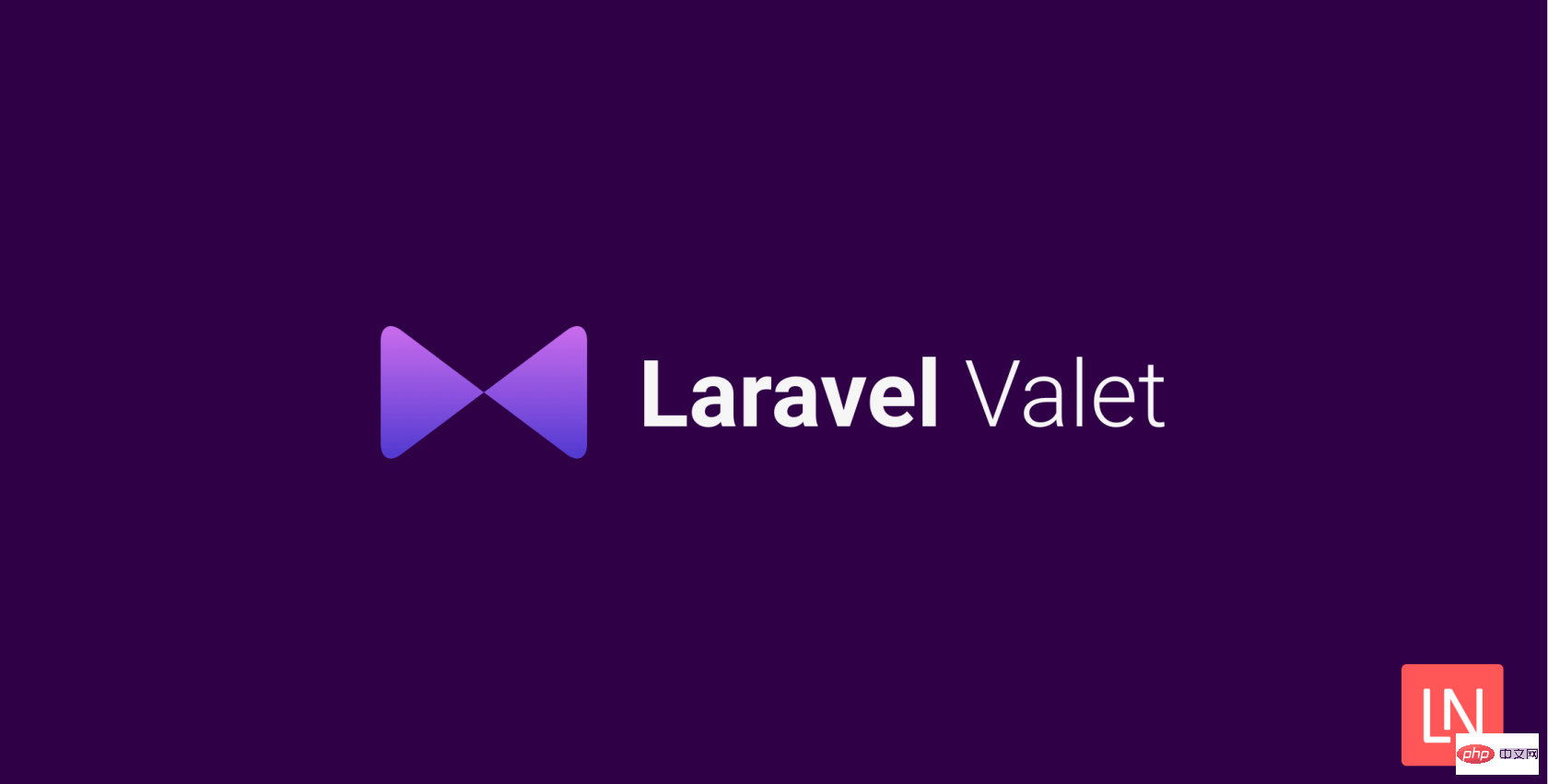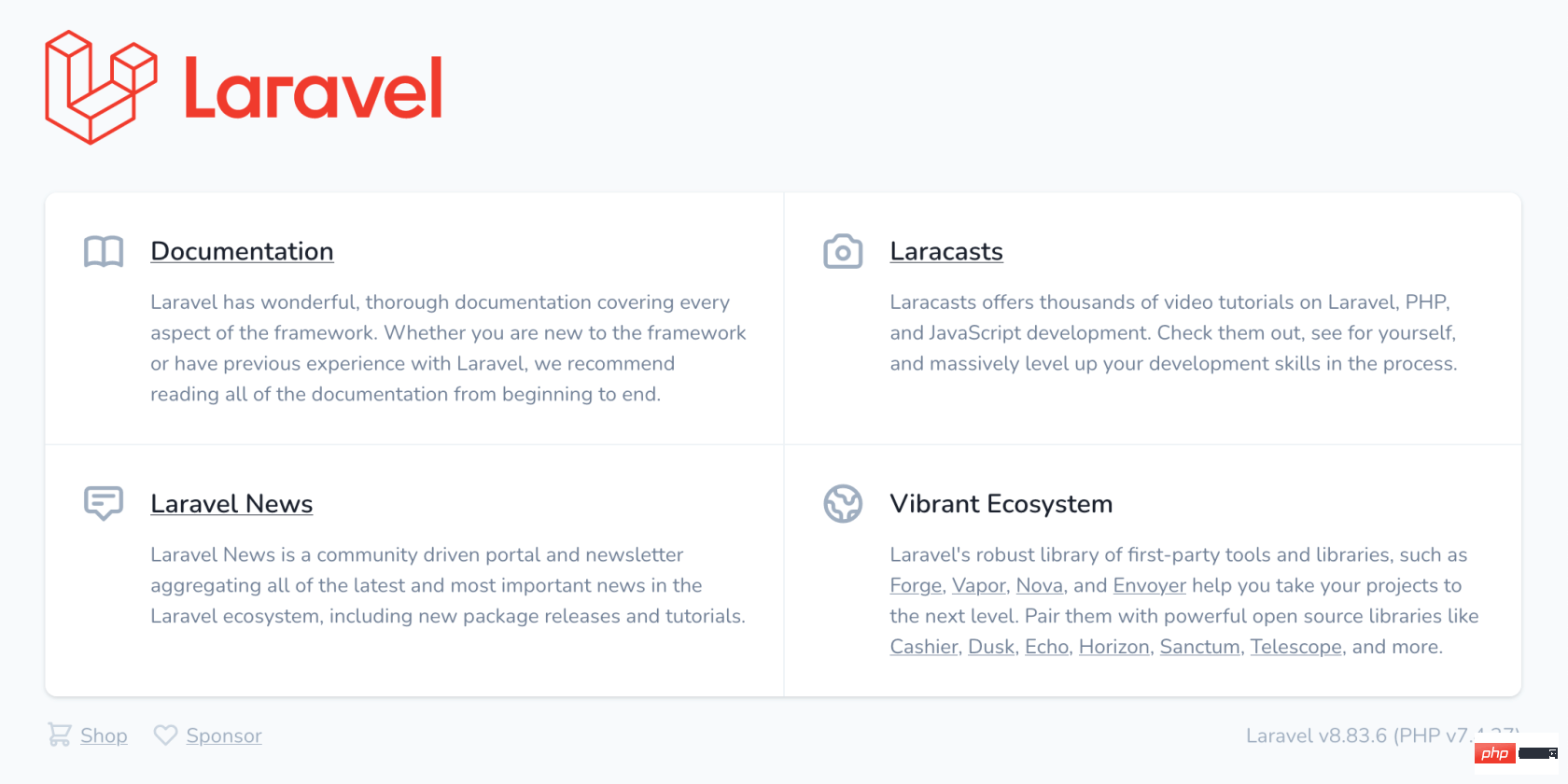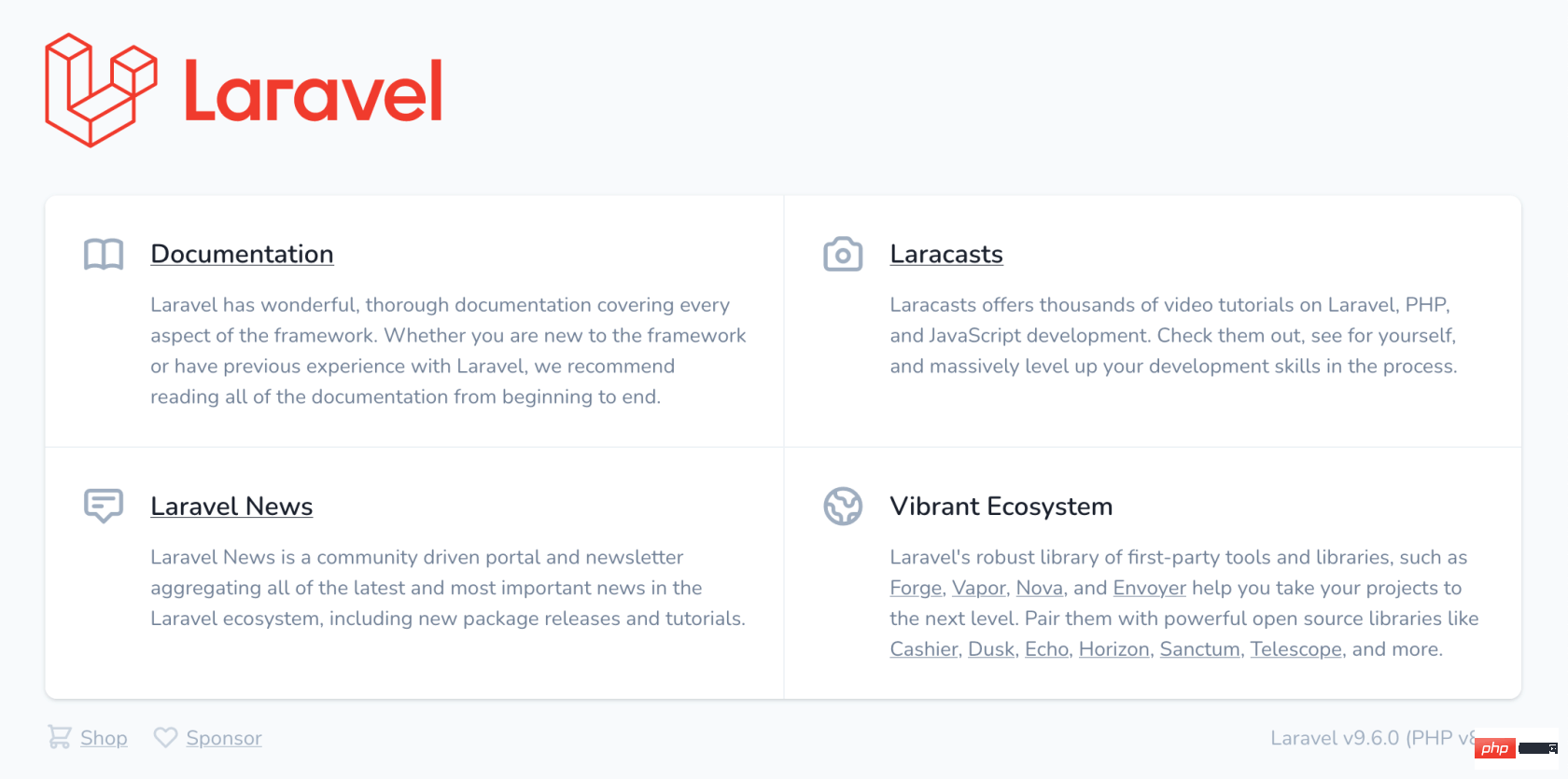 PHP Framework
PHP Framework
 Laravel
Laravel
 Laravel Valet new version released: 3.0 supports multiple versions of PHP!
Laravel Valet new version released: 3.0 supports multiple versions of PHP!
Laravel Valet new version released: 3.0 supports multiple versions of PHP!

The Laravel Valet new version released: 3.0 supports multiple versions of PHP! team has released the next version of Laravel Valet new version released: 3.0 supports multiple versions of PHP! Valet (3.0), which introduces running multiple versions of PHP in parallel in Valet applications.
Previously, you could use valet use php@7.2 to specify the PHP Valet version serving your application locally, but now you can use the following command on every site (including the default site) Do this based on:
cd path/to/app # 隔离当前项目 valet isolate php@7.4 # 按名称隔离站点 # 这个命令也会安装 PHP 版本 # 如果尚未安装 valet isolate php@8.0 --site=laravel9x
After isolating the site, you can see that my local Valet installation is serving the project with various isolated PHP versions:

Another application using the default installed PHP (v8.1) version:

Another challenge you may encounter with this setup is in the CLI Run the command that matches the PHP version. What I do is create a symlink pointing to the brew version of PHP somewhere in the path:
ln -s $(brew --prefix php@7.4)/bin/php $HOME/bin/php74 php74 --version PHP 7.4.28 (cli) (built: Mar 3 2022 06:26:49) ( NTS ) ...
With this version of PHP, you can add command prefixes for composer etc:
php74 $(which composer) install
You may also need to symlink other binaries (such as pecl) in the same way to install the extension.
PHP Monitor
Following PHP Monitor 5.0 for macOS, the author released PHP Monitor 5.2 that supports Valet 3, enabling management isolation PHP versioning made a breeze:
For more details, check out the PHP Monitor 5.2 post, which includes information on how to get multiple commands from the command line using the CLI helper provided by phpmon. PHP version information.
Upgrade now
To upgrade to Valet 3, you can run the following composer command to update and install the latest Valet (hat tip to @jakebathman ):
composer global require "laravel/valet:^3.0"
After that, make sure to run valet install to complete the installation. Congratulations to all contributors, especially Nasir Uddin Nobin, Matt Stauffer, and everyone else involved in working on Valet 3!
Original address: https://laravel-news.com/laravel-valet-3-0-0
Translation address: https://learnku.com/laravel/ t/66700
[Related recommendations: laravel video tutorial]
The above is the detailed content of Laravel Valet new version released: 3.0 supports multiple versions of PHP!. For more information, please follow other related articles on the PHP Chinese website!

Hot AI Tools

Undresser.AI Undress
AI-powered app for creating realistic nude photos

AI Clothes Remover
Online AI tool for removing clothes from photos.

Undress AI Tool
Undress images for free

Clothoff.io
AI clothes remover

Video Face Swap
Swap faces in any video effortlessly with our completely free AI face swap tool!

Hot Article

Hot Tools

Notepad++7.3.1
Easy-to-use and free code editor

SublimeText3 Chinese version
Chinese version, very easy to use

Zend Studio 13.0.1
Powerful PHP integrated development environment

Dreamweaver CS6
Visual web development tools

SublimeText3 Mac version
God-level code editing software (SublimeText3)

Hot Topics
 Laravel Introduction Example
Apr 18, 2025 pm 12:45 PM
Laravel Introduction Example
Apr 18, 2025 pm 12:45 PM
Laravel is a PHP framework for easy building of web applications. It provides a range of powerful features including: Installation: Install the Laravel CLI globally with Composer and create applications in the project directory. Routing: Define the relationship between the URL and the handler in routes/web.php. View: Create a view in resources/views to render the application's interface. Database Integration: Provides out-of-the-box integration with databases such as MySQL and uses migration to create and modify tables. Model and Controller: The model represents the database entity and the controller processes HTTP requests.
 Solve caching issues in Craft CMS: Using wiejeben/craft-laravel-mix plug-in
Apr 18, 2025 am 09:24 AM
Solve caching issues in Craft CMS: Using wiejeben/craft-laravel-mix plug-in
Apr 18, 2025 am 09:24 AM
When developing websites using CraftCMS, you often encounter resource file caching problems, especially when you frequently update CSS and JavaScript files, old versions of files may still be cached by the browser, causing users to not see the latest changes in time. This problem not only affects the user experience, but also increases the difficulty of development and debugging. Recently, I encountered similar troubles in my project, and after some exploration, I found the plugin wiejeben/craft-laravel-mix, which perfectly solved my caching problem.
 Laravel user login function
Apr 18, 2025 pm 12:48 PM
Laravel user login function
Apr 18, 2025 pm 12:48 PM
Laravel provides a comprehensive Auth framework for implementing user login functions, including: Defining user models (Eloquent model), creating login forms (Blade template engine), writing login controllers (inheriting Auth\LoginController), verifying login requests (Auth::attempt) Redirecting after login is successful (redirect) considering security factors: hash passwords, anti-CSRF protection, rate limiting and security headers. In addition, the Auth framework also provides functions such as resetting passwords, registering and verifying emails. For details, please refer to the Laravel documentation: https://laravel.com/doc
 The Continued Use of PHP: Reasons for Its Endurance
Apr 19, 2025 am 12:23 AM
The Continued Use of PHP: Reasons for Its Endurance
Apr 19, 2025 am 12:23 AM
What’s still popular is the ease of use, flexibility and a strong ecosystem. 1) Ease of use and simple syntax make it the first choice for beginners. 2) Closely integrated with web development, excellent interaction with HTTP requests and database. 3) The huge ecosystem provides a wealth of tools and libraries. 4) Active community and open source nature adapts them to new needs and technology trends.
 Laravel framework installation method
Apr 18, 2025 pm 12:54 PM
Laravel framework installation method
Apr 18, 2025 pm 12:54 PM
Article summary: This article provides detailed step-by-step instructions to guide readers on how to easily install the Laravel framework. Laravel is a powerful PHP framework that speeds up the development process of web applications. This tutorial covers the installation process from system requirements to configuring databases and setting up routing. By following these steps, readers can quickly and efficiently lay a solid foundation for their Laravel project.
 How to learn Laravel How to learn Laravel for free
Apr 18, 2025 pm 12:51 PM
How to learn Laravel How to learn Laravel for free
Apr 18, 2025 pm 12:51 PM
Want to learn the Laravel framework, but suffer from no resources or economic pressure? This article provides you with free learning of Laravel, teaching you how to use resources such as online platforms, documents and community forums to lay a solid foundation for your PHP development journey from getting started to master.
 How to view the version number of laravel? How to view the version number of laravel
Apr 18, 2025 pm 01:00 PM
How to view the version number of laravel? How to view the version number of laravel
Apr 18, 2025 pm 01:00 PM
The Laravel framework has built-in methods to easily view its version number to meet the different needs of developers. This article will explore these methods, including using the Composer command line tool, accessing .env files, or obtaining version information through PHP code. These methods are essential for maintaining and managing versioning of Laravel applications.
 What versions of laravel are there? How to choose the version of laravel for beginners
Apr 18, 2025 pm 01:03 PM
What versions of laravel are there? How to choose the version of laravel for beginners
Apr 18, 2025 pm 01:03 PM
In the Laravel framework version selection guide for beginners, this article dives into the version differences of Laravel, designed to assist beginners in making informed choices among many versions. We will focus on the key features of each release, compare their pros and cons, and provide useful advice to help beginners choose the most suitable version of Laravel based on their skill level and project requirements. For beginners, choosing a suitable version of Laravel is crucial because it can significantly impact their learning curve and overall development experience.





